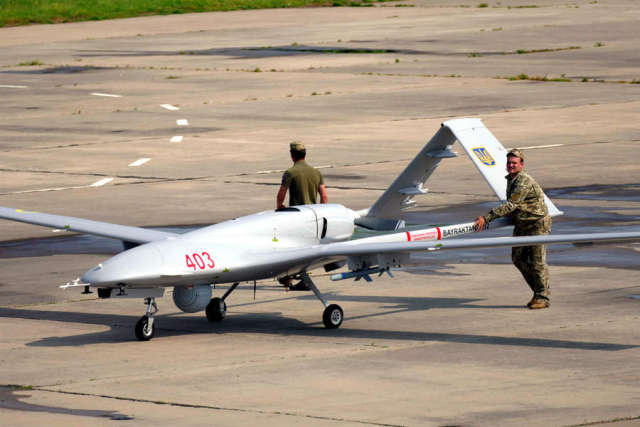Reserve General Popov told how the Russian army is disabling the APU drones
The Ukrainian military complain about the massive deployment by the Russian army of electronic warfare (EW), which block the operation of unmanned aerial vehicles. As a result, the APU lost not only the strike force of drones, but also lost access to relevant intelligence in many ways. What exactly means of electronic warfare are used by the Russian military, - in the material of "Gazeta.Ru».
"The Ukrainian army relies on unmanned aerial vehicles to conduct tactical reconnaissance. This was of key importance in the conditions of the dominance of Russian aviation in the air. Information from NATO satellites for tactical needs was not always available and relevant. Recently, the Ukrainian military has been complaining about the massive deployment of electronic warfare by the Russian army, which block the work of both shock and reconnaissance drones," the American portal Military Watch Magazine reported.
At the time of the beginning of the Russian special military operation, Ukraine had a whole line of unmanned aerial vehicles. The main striking force was the Turkish Bayraktar TB2, but they were also models of their own design, including the Turtledove, Leleka, Strepet, Spectator and a number of others. Already during the operation, the APU received Phoenix Ghost and Switchblade unmanned aerial vehicles from the United States.
"We must pay tribute to the Ukrainian military. They carefully studied the experience of all recent conflicts and assessed the role of drones with both reconnaissance and strike potential. The role of UAVs has increased over the past ten years by a multiple. These "silent killers" are able to invisibly enter strike positions and hit armored vehicles and manpower, transmit information to artillery. It is quite difficult to counteract them precisely because of their low visibility, and also for reasons of military-economic properties. So, hitting a drone with a S-300 missile system is like shooting sparrows with a howitzer," he told the newspaper.En" military expert, reserve Major General Vladimir Popov.
Sergei Belousov, a member of the Board of Military Experts, believes that the Russian Defense Ministry used almost the entire range of electronic warfare equipment capable of reducing the activity of Ukrainian drones during the special operation.
"One of the most powerful complexes capable of depriving ships and planes of navigation and communication, disabling all the electronics of their onboard weapons, is Murmansk-BN. In 2017, this was installed in the Crimea. The range is up to the Mediterranean Sea. It is clear that the entire territory of Ukraine is in his "sight". It is also clear that chasing individual drones is a small goal for Murmansk. There are other means that are no less effective. For example, the Mercury-BM complex is effective on an area of 20-50 hectares. Huge areas are being created where UAVs cannot work in principle," Belousov said "Газете.Ru ".
According to Belousov, Krasukha-4 and Moskva-1 systems can be used to neutralize Ukrainian UAVs, which paralyze offensive and defensive weapons of any type of air and ground means.
"The Krasukha-4 complex suppresses ground radars and aircraft radio detection and guidance systems. It is also capable of inflicting radar damage to communications. Obviously, it can block the control channels of drones. The Moscow-1 complex, in turn, in the passive electronic scanning mode, without emitting radio waves, monitors the space within a radius of 200 kilometers, detects not only airplanes and missiles, but UAVs. After that, he transmits their coordinates," Belousov said.
Ex-GRU officer, reserve colonel, radar warfare specialist Mikhail Lavrenchuk, in turn, notes that the Russian army is armed with not only stationary, but also portable and small-sized electronic warfare equipment.
"These are complexes such as "Pischal", "Sapsan-Snipe", "Solaris-N", which are convenient and effective to use against drones. The "squeaker", for example, weighs only 3.5 kg, looks like a machine gun with a volumetric casing instead of a barrel, operates for 2 km in the conditions of direct visibility of the target. The principle of operation is based on remote jamming at the frequencies of satellite navigation systems and communication and control channels.
"Sapsan-Snipe" "Solaris-N" is already capable of detecting a drone at a distance of up to 10-15 kilometers. They are heavier, mounted on a car or armored personnel carrier. The systems are equipped according to the "friend-foe" principle and does not affect their UAVs, which are included in the database of complexes," Lavrenchuk said.
The colonel expressed the opinion that the APU "overestimated the role of drones."
- the ex-GRU officer believes.
Victor Sokirko



